
Design Journal
Scope & Guideline
Unveiling New Horizons in Design Research
Introduction
Aims and Scopes
- Participatory and User-Centered Design:
The journal emphasizes participatory design methodologies that actively involve users in the design process, ensuring that the outcomes are relevant and tailored to their needs. - Sustainability and Environmental Design:
A significant focus is on sustainable design practices that address environmental challenges, promoting eco-friendly solutions across various industries. - Cultural and Contextual Design:
The journal explores how cultural contexts influence design practices, advocating for designs that are sensitive to local traditions and social dynamics. - Technological Integration in Design:
Research on incorporating emerging technologies into design processes is prevalent, with a focus on how digital tools and platforms can enhance creativity and user interaction. - Interdisciplinary Approaches:
The Design Journal encourages interdisciplinary collaborations, exploring how insights from fields such as psychology, sociology, and technology can inform and transform design practices. - Empathy and Emotional Design:
There is a strong emphasis on understanding user emotions and experiences, advocating for designs that foster empathy and improve user engagement.
Trending and Emerging
- Health and Wellbeing in Design:
There is a growing emphasis on how design can contribute to health and wellbeing, especially in contexts like healthcare environments and products for aging populations. - Digital and Interactive Design:
Research on digital and interactive design methodologies is trending, particularly with the rise of virtual and augmented reality tools that enhance user engagement and experience. - Circular Economy and Sustainable Practices:
A significant trend is the focus on circular design practices that promote sustainability and resource efficiency, reflecting a broader societal shift towards environmental responsibility. - Community Engagement and Social Design:
There is an increasing interest in community-driven design initiatives that foster social interaction and address local needs, highlighting the importance of participatory approaches. - Generative and Adaptive Design:
Emerging methodologies that utilize generative design techniques and adaptive systems are becoming more prominent, showcasing innovation in addressing complex design challenges.
Declining or Waning
- Traditional Craft and Artisan Design:
Research focused on traditional crafts and artisan practices has become less frequent, possibly due to the growing interest in modern technological solutions and mass production methods. - Static Design Methodologies:
There is a noticeable decline in papers that advocate for rigid or static design methodologies, as the field increasingly values adaptability and iterative processes. - Design Exclusivity:
Themes centered around exclusive or elitist design practices are waning, as there is a stronger push towards inclusivity and accessibility in design. - Design Criticism as a Standalone Discipline:
While design criticism remains important, it is increasingly integrated with practical design research rather than existing as a separate focus area within the journal.
Similar Journals
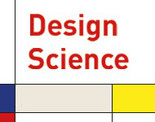
Design Science
Exploring the Intersection of Theory and Practice.Design Science, published by Cambridge University Press, is a premier open access journal that has established itself as a leading platform for innovative research in the interdisciplinary field of design. Since its inception in 2015, the journal has focused on integrating design theories with practical applications across various sectors, including engineering, visual arts, and simulation modeling. With a remarkable impact factor and high rankings in multiple categories—Rank #11/667 in Visual Arts and Performing Arts and Rank #79/307 in General Engineering—Design Science commands a prominent position, being ranked in the top 98th, 76th, and 74th percentiles within its respective fields according to Scopus. The journal's dedication to open access ensures that cutting-edge research is accessible to a global audience, fostering collaboration and dialogue among researchers, professionals, and students alike. This journal not only aims to advance the understanding of design sciences but also serves as a vital resource for those seeking to explore the evolving dynamics of design practice in a rapidly changing technological landscape.
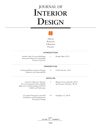
Journal of Interior Design
Where Design Meets Critical Thought.The Journal of Interior Design, published by SAGE Publications Inc., is a premier peer-reviewed academic journal dedicated to the field of interior design. Established in 1975, this journal has been a pivotal platform for disseminating cutting-edge research, innovative design practices, and critical theory in interior spaces. With an impressive Q1 ranking in the Visual Arts and Performing Arts category and a 95th percentile ranking among its peers in arts and humanities, the journal reflects the highest standards of academic excellence. Although it does not offer open access, it provides valuable insights and findings relevant for researchers, professionals, and students alike, enhancing the understanding of interior environments and their impact on human behavior and society. As the field continues to evolve, the Journal of Interior Design serves as an essential resource for thought leadership and scholarly discourse.

International Journal of Affective Engineering
Advancing emotional intelligence in engineering.Welcome to the International Journal of Affective Engineering, an esteemed publication dedicated to advancing the interdisciplinary fields of affective engineering and human-centered design. Published by the Japan Society of Kansei Engineering, this journal aims to foster innovative research that bridges emotional perception with engineering practices, ultimately enhancing user experiences across various applications. As a peer-reviewed platform, the journal plays a pivotal role in disseminating groundbreaking studies and methodologies, positioning itself as a valuable resource within the academic landscape. The journal is designed for a diverse audience, including researchers, industry professionals, and students committed to exploring the emotional dimensions of technology. Although it currently operates under a subscription model, the journal remains open to new research contributions that emphasize the significance of affective design in technology development. With its focus on quality research, the International Journal of Affective Engineering is poised to make a substantial impact in the evolving field of affective sciences.
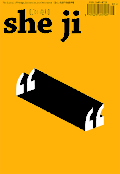
She Ji-The Journal of Design Economics and Innovation
Fostering Interdisciplinary Dialogue in Design and EconomicsShe Ji - The Journal of Design Economics and Innovation is a pioneering Open Access journal published by Elsevier since 2015, based in the Netherlands. With its unique focus on the intersection of design, economics, and innovation, this journal serves as a vital platform for researchers, professionals, and students who are keen on understanding the complexities of designing value-creating innovations. Consistently recognized for its high impact, She Ji holds a prestigious Q1 quartile ranking in both Economics and Education, while maintaining a strong presence in Management of Technology and Innovation and the Visual Arts sector. This reflects its commitment to fostering interdisciplinary dialogue and advancing knowledge in the rapidly evolving fields of design and economic theory. Researchers seeking to disseminate their work can benefit from the journal's robust open access model, ensuring wide visibility and accessibility to their findings. With a commitment to excellence, She Ji continues to shape thought leadership in its field and is an essential resource for anyone involved in the integration of design thinking with economic innovation.

Anadolu Universitesi Sanat & Tasarim Dergisi-Anadolu University Journal of Art & Design
Exploring the Frontiers of Art and DesignThe Anadolu Universitesi Sanat & Tasarim Dergisi (Anadolu University Journal of Art & Design) serves as a vital academic platform dedicated to the exploration and dissemination of innovative research in the fields of art and design. Published by ANADOLU UNIVERSITY, this journal aims to foster scholarly dialogue among artists, designers, and academics, encouraging interdisciplinary collaboration and the exchange of ideas. With an ISSN of 2146-9059, it provides a space for original articles, critical essays, and reviews that reflect the evolving nature of artistic and design practice. Although specific impact metrics are currently unavailable, the journal is committed to enhancing the visibility of art and design research within the academic community. By promoting open access to its content, the journal ensures that cutting-edge research is freely available, making it an essential resource for professionals, researchers, and students seeking to broaden their understanding of contemporary artistic trends and methodologies. Located in Eskisehir, Turkey, this journal not only contributes to the academic landscape but also enriches the cultural fabric of the region and beyond.

Landscape Architecture and Art
Advancing Knowledge at the Intersection of Landscape and ArtLandscape Architecture and Art is a distinguished journal published by the Latvia University of Life Sciences and Technologies, specializing in the intersection of landscape architecture, environmental design, and the visual arts. Established in 2016, this journal has rapidly garnered recognition in various academic categories, achieving Q3 ranking in Agricultural and Biological Sciences (miscellaneous), Q4 in Geography, Planning and Development, and notably Q1 in Visual Arts and Performing Arts as of 2023. With its ISSN 2255-8632 and E-ISSN 2255-8640, the journal provides an essential platform for researchers, professionals, and students to explore innovative approaches and sustainable practices in landscape design and conservation. Although currently not open access, the journal's commitment to high-quality research is evident through its impressive Scopus rankings, particularly in the Arts and Humanities with a commendable 88th percentile for Visual Arts and Performing Arts. Located in Jelgava, Latvia, this journal serves as a vital resource for advancing knowledge and fostering collaboration in the fields of landscape architecture and environmental stewardship.

Fashion Practice-The Journal of Design Creative Process & the Fashion Industry
Fostering Critical Discussions in Fashion Design.Fashion Practice: The Journal of Design Creative Process & the Fashion Industry, published by Routledge Journals, Taylor & Francis Ltd, serves as a pivotal platform for advancing knowledge in the realms of fashion design and its creative processes. With a focus on the interconnections between design and industry, this journal addresses contemporary issues and innovative practices within the fashion sector, making it an essential resource for researchers, professionals, and students alike. Holding a prestigious Q1 rank in both Cultural Studies and Visual Arts and Performing Arts, it reflects a strong commitment to academic excellence, evidenced by its notable Scopus rankings and an impact factor that positions it among the top 5% of journals in its field. Although it operates on a subscription model, the journal is a valuable investment for those looking to deepen their understanding of fashion's evolving landscape. Since its inception in 2015, Fashion Practice has fostered critical discussions and insights, making it indispensable for anyone seeking to influence the future of the fashion industry.
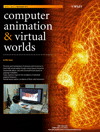
COMPUTER ANIMATION AND VIRTUAL WORLDS
Pioneering Research in Virtual Worlds and Computer Graphics.COMPUTER ANIMATION AND VIRTUAL WORLDS, published by Wiley, is a pivotal journal in the fields of Computer Graphics and Computer-Aided Design, as well as Software. With a focus on the intersection of technology and creativity, the journal provides a platform for researchers and professionals to share innovative studies, new methodologies, and insights that shape the future of computer animation and virtual environments. Currently holding a Q2 category in Computer Graphics and a Q3 in Software for 2023, it ranks #63 out of 106 in its niche, highlighting its influence and relevance in the academic community. Though the journal operates under a subscription model, it also offers options for open access, ensuring that a broader audience can engage with groundbreaking research. The journal has been publishing continuously since its inception in 2004 and looks forward to further contributions as it moves towards its 20th anniversary in 2024. Whether you are a seasoned researcher, an industry professional, or a student eager to explore these dynamic fields, COMPUTER ANIMATION AND VIRTUAL WORLDS is an essential resource for advancing knowledge and innovation.

Multimodal Technologies and Interaction
Advancing Interdisciplinary Dialogue in Technology.Multimodal Technologies and Interaction, published by MDPI since 2017, is an esteemed open-access journal based in Switzerland, dedicated to the exploration and advancement of innovative multimodal systems that enhance user experience across various digital platforms. With its commitment to disseminating high-quality research in diverse areas such as Computer Networks and Communications, Human-Computer Interaction, and Neuroscience, the journal has rapidly established itself within the academic community, achieving a commendable position in Scopus rankings including Q2 in both Computer Networks and Communications and Computer Science Applications. As an essential resource for researchers, professionals, and students alike, Multimodal Technologies and Interaction fosters interdisciplinary dialogue and supports the development of cutting-edge technologies, ensuring that advancements in multimodal interaction are accessible to a global audience. Scholars can benefit from its Open Access format, allowing unrestricted access to influential studies that shape the future of technology and interaction design.
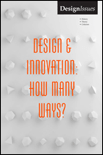
DESIGN ISSUES
Advancing Scholarly Conversations in DesignDESIGN ISSUES, published by MIT PRESS, serves as a vital platform for scholarly discourse within the realms of design, arts, and humanities. With an ISSN of 0747-9360 and an E-ISSN of 1531-4790, this journal has established itself as a critical resource for researchers and practitioners alike, maintaining a significant presence in the academic community. As of 2023, it is ranked in the second quartile in Arts and Humanities (Miscellaneous) and the fourth quartile in Computer Graphics and Computer-Aided Design, showcasing its diverse scope and interdisciplinary approach. Spanning converged years from 2005 to 2024, DESIGN ISSUES fosters an exploration of contemporary design debates, theoretical advancements, and case studies, ensuring that it remains relevant and insightful amid the fast-evolving landscape of design practices. While not an open access journal, it is dedicated to enriching the academic and professional realms by engaging with pressing design issues, making it an essential read for anyone invested in the future of design.